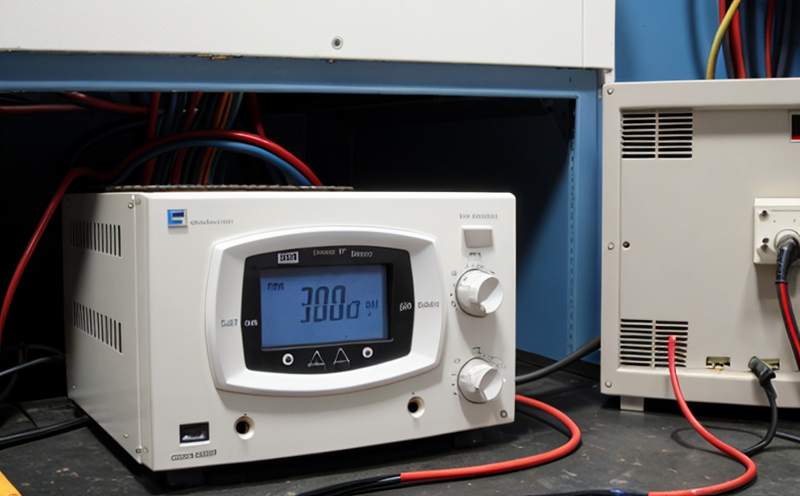IEC 62368 Electrical Testing of Audio Video Lighting Interfaces
The International Electrotechnical Commission (IEC) standard IEC 62368-1 provides a safety framework for electrical and electronic equipment, including audio/video lighting interfaces. This standard addresses the safety requirements of such devices with respect to their electrical and thermal characteristics. Compliance with this standard is essential for manufacturers looking to ensure that products are safe for use in residential, commercial, and industrial environments.
The primary goal of IEC 62368-1 is to harmonize safety regulations across different regions by establishing a universal set of requirements. This ensures that manufacturers do not need to design multiple versions of their products tailored to specific markets; instead, they can create one globally compliant product.
Testing according to IEC 62368-1 involves several key steps aimed at assessing the electrical safety of devices. These include identifying potential hazards associated with the equipment and evaluating how these hazards could impact users or the environment. The testing process typically begins by determining which parts of the device need to be tested based on its intended use, followed by applying appropriate test procedures designed to identify any risks.
For audio/video lighting interfaces specifically, this involves examining various aspects such as insulation resistance, power supply voltage, and circuit integrity. Additionally, there are specific tests meant to evaluate protection against overheating, short circuits, and other potential failures that could lead to injury or damage.
The testing procedure itself can be complex due to the nature of these interfaces which often involve multiple components working together seamlessly. It requires careful preparation and execution to ensure accurate results. Preparing specimens correctly is crucial; this includes ensuring all connections are secure, wires are properly terminated, and any external power supplies used during tests are appropriate for the type of device being tested.
The use of specialized test equipment ensures precise measurements can be made throughout each stage of testing. This might include high-voltage testers capable of simulating real-world conditions accurately or thermal cameras that help monitor temperature changes within a system under load. Reporting findings clearly and concisely is equally important so that stakeholders understand what was tested, how it was done, and whether any issues were identified.
| Equipment Type | Purpose |
|---|---|
| High Voltage Tester | To assess insulation resistance and simulate overvoltage conditions. |
| Thermal Camera | To monitor temperature changes during testing to identify overheating risks. |
| Circuit Analyzer | To evaluate circuit integrity and ensure proper operation of all components. |
Scope and Methodology
The scope of IEC 62368-1 testing encompasses the electrical safety aspects of audio/video lighting interfaces. The methodology involves a series of detailed steps aimed at ensuring compliance with this standard.
| Step | Description |
|---|---|
| Determine Test Parameters | Identify which parts of the device require testing based on its intended use. |
| Prepare Specimens | Ensure all connections are secure, wires are properly terminated, and external power supplies are appropriate for the type of device being tested. |
| Apply Test Procedures | Conduct tests designed to identify potential hazards such as insulation resistance, power supply voltage, circuit integrity, protection against overheating, short circuits, etc. |
| Analyze Results | Evaluate the results of each test to determine if they meet specified acceptance criteria. |
Benefits
- Achieves regulatory compliance, reducing risks associated with non-compliance penalties or recalls.
- Protects end-users by ensuring that products meet stringent safety standards.
- Enhances brand reputation through consistent quality assurance practices.
- Facilitates easier market access in different countries without needing to redesign products for each region.
- Reduces development costs and time by eliminating the need for multiple versions of a product.
- Improves product reliability, extending its useful life span.
Why Choose This Test
Selecting IEC 62368-1 testing for audio/video lighting interfaces offers numerous advantages. Firstly, it ensures that your products meet global safety standards, which is increasingly important in today's interconnected world where consumers expect consistent quality regardless of where they purchase a product.
Secondly, by choosing this test, you demonstrate commitment to user safety and satisfaction. This can significantly enhance customer trust and loyalty, leading to increased sales and market share. Furthermore, compliance with international standards like IEC 62368-1 helps reduce the risk of recalls or legal actions against your company.
Thirdly, selecting this test streamlines the product development process by allowing you to design a single version of your product that meets all necessary regulatory requirements. This not only saves time but also reduces costs associated with redesigning products for different markets.
Forth, it ensures long-term reliability and durability of your products, which is particularly important for lighting fixtures that are exposed to environmental conditions over extended periods.





